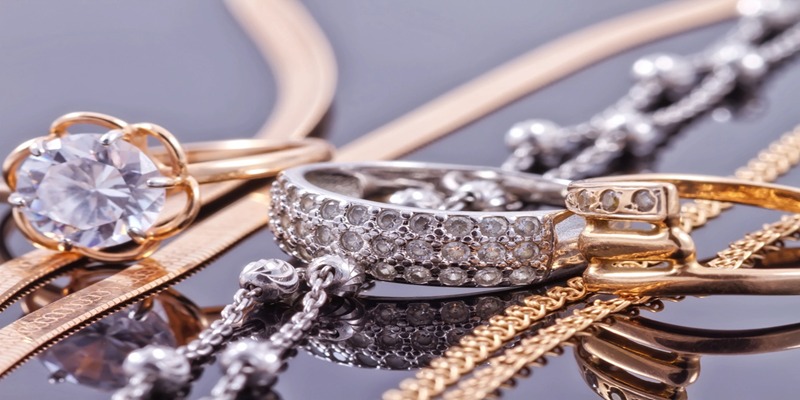Art speaks to our senses and ignites emotion, transcending time and culture. Jewelry, likewise, whispers stories through shapes, colors, and craftsmanship. On Galeriemichael at https://www.galeriemichael.com/, the vibrant union of art and beauty finds a natural stage, reminding us that art’s influence extends far beyond canvas or sculpture.
The Artistic Soul Behind Precious Metals
Jewelry doesn’t simply adorn—it carries a creative spirit born of centuries of artistic expression. Pieces become miniature sculptures, reflecting both an artist’s vision and the desires of those who wear them. From delicate curves to bold geometry, artistry breathes life into every ring, necklace, or brooch.

Across different eras, goldsmiths and designers have drawn inspiration from art movements and masterworks. A single stroke of a painter’s brush can echo in a jeweler’s curve of gold. Similarly, a sculpture’s texture may inspire the way a pendant is hammered or engraved. This profound dialogue between disciplines makes jewelry not merely decorative but deeply meaningful.
Art As Inspiration For Jewelry Design
Throughout history, art has inspired jewelry designers to explore daring concepts. Renaissance paintings, abstract modernism, and even the rhythm of photography all shape innovative designs. Artists extract details, emotions, and textures from masterpieces, translating them into wearable works of art.
Before exploring specific influences, it’s crucial to recognize how deeply intertwined art and jewelry truly are. Each discipline feeds the other’s creativity, forming a dialogue of color, form, and emotion. This connection gives jewelry its power to captivate not only the eye but also the imagination.
Artistic Movements Leave Their Mark
Movements like Art Nouveau and Art Deco revolutionized jewelry with sweeping lines and vibrant palettes. Art Nouveau pieces mimic natural forms, with flowing vines and delicate blossoms. In contrast, Art Deco emphasizes symmetry, bold color contrasts, and geometric brilliance. Each era leaves behind treasures that remain timeless symbols of style.

Beyond merely reflecting aesthetics, these movements also transformed how people viewed jewelry itself. Art Nouveau elevated jewelry to fine art, rather than simple ornamentation. Meanwhile, Art Deco brought a sleek modern edge, embracing new materials like enamel, onyx, and even plastics. These influences continue to ripple through contemporary collections showcased on platforms such as www.galeriemichael.com..
Iconic Artists Shape Trends
Painters and sculptors often spark new trends in jewelry. Think of Salvador Dalí, whose surrealist visions inspired extraordinary jewels shaped like lips, eyes, or melting clocks. Picasso’s bold lines and Cubist perspectives encouraged designers to break traditional forms. The conversation between fine art and jewelry keeps evolving, driven by these brilliant minds.
Artists like Claude Monet have inspired delicate floral designs, echoing the soft hues of Impressionist paintings. Meanwhile, modernists such as Piet Mondrian brought bold blocks of primary colors to jewelry, creating pieces as vivid as paintings. Every brushstroke, every sculpture leaves behind whispers that echo in shimmering metal and radiant gems.
Jewelry As A Canvas For Artistic Expression
Jewelry becomes an intimate gallery where artists reveal their stories. Metal and gemstones turn into paint and brush, each detail crafted with meaning. It’s art not only for display but also for connection, as wearers carry personal narratives around their necks, wrists, and fingers.
This transformation of jewelry into miniature art pieces reflects how artists see beyond materials. They view every surface as potential space for creativity, infusing it with emotion and vision. Let’s dive deeper into how artists push boundaries when crafting jewelry masterpieces.
Sculptural Elements Add Dimension
Some designers approach jewelry like sculpture. Bold, three-dimensional shapes cast shadows and reflect light in mesmerizing ways. Pieces twist and curve, suggesting motion even when at rest. These sculptural qualities elevate jewelry from accessory to collectible artwork.
Such pieces often challenge conventional notions of wearability. A ring might stretch across two fingers, while a necklace may drape like a kinetic installation. Yet, despite their daring forms, they remain personal objects, touching skin and becoming part of someone’s story.
Colors And Gemstones Tell Stories
Gemstones provide a vibrant palette for artistic expression. Designers choose stones not merely for sparkle but for color symbolism, rarity, and emotion. Deep blues evoke calm seas, while fiery reds ignite passion. Artists carefully select combinations to create harmony or contrast, weaving narratives through color alone.

Beyond color, stones also carry historical and cultural weight. Jade embodies Eastern traditions, symbolizing wisdom and serenity. Diamonds often stand for eternal love but also for strength and clarity. By combining gems thoughtfully, artists compose stories as intricate as any painting displayed on https://www.galeriemichael.com/.
The Emotional Connection Between Art And Jewelry
Wearing jewelry is more than placing an ornament on the body—it’s a personal embrace of art. A pendant might echo a favorite painting’s colors, or a ring might capture a sculptor’s aesthetic. Such pieces become talismans, carrying memories, dreams, and aspirations.
Art and jewelry share this unique power to stir feelings, spark conversations, and connect people across generations. Before closing, let’s highlight how this relationship continues shaping modern jewelry.
Contemporary Artists Bridge Worlds
Modern artists blur boundaries between fine art and wearable pieces. Contemporary jewelers experiment with unexpected materials like recycled plastics, ceramics, or even digital elements. Their designs often challenge tradition, questioning what jewelry can represent and how it interacts with the body.
Beyond materials, these artists frequently address social or political themes, turning jewelry into statements. A brooch might symbolize environmental awareness, while a bracelet might speak of cultural identity. This bold vision ensures jewelry remains a relevant, evolving art form—a concept celebrated by art-focused platforms like https://www.galeriemichael.com/.
The Role Of Galleries And Collectors
Galleries play a crucial part in this ongoing dialogue. They spotlight artists who merge art and jewelry, offering them visibility and appreciation. Collectors, in turn, support these creatives, recognizing that jewelry holds value not just as adornment but as genuine artistic heritage. Sites like www.galeriemichael.com celebrate this fusion, showcasing how art’s influence touches every crafted piece.
Collectors often seek unique pieces that connect them personally to an artistic vision. Such works may be as rare as any painting or sculpture, destined to become heirlooms. The process of collecting art-jewelry becomes an act of preserving artistic innovation and ensuring future generations witness the ongoing marriage between these creative worlds.
Conclusion
Art infuses jewelry with deeper purpose and unforgettable beauty. Designers draw from paintings, sculptures, and photography to craft pieces that speak volumes. Each jewel becomes a silent storyteller, weaving art’s legacy into everyday life. And on Galeriemichael, this creative journey shines brighter than ever.
